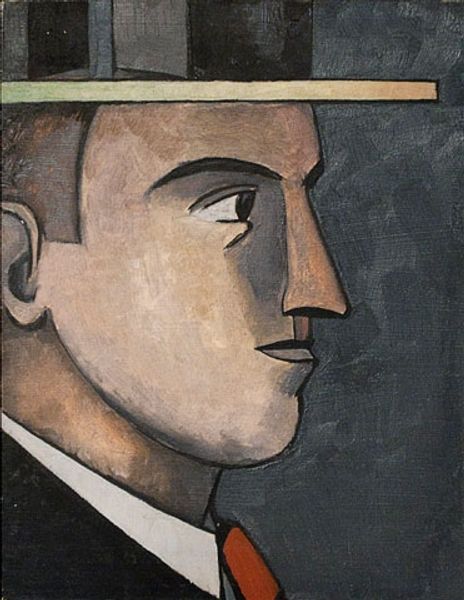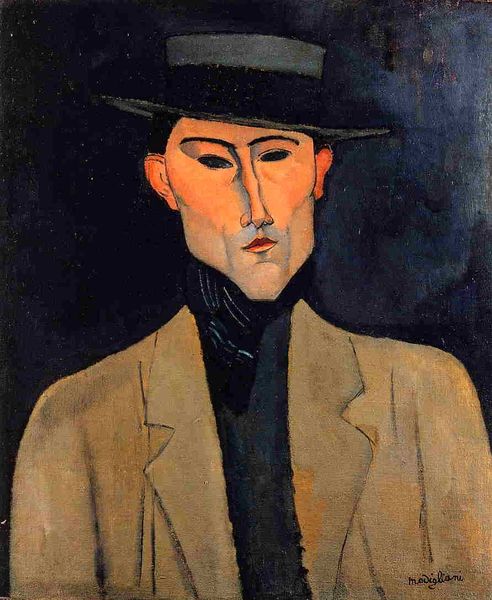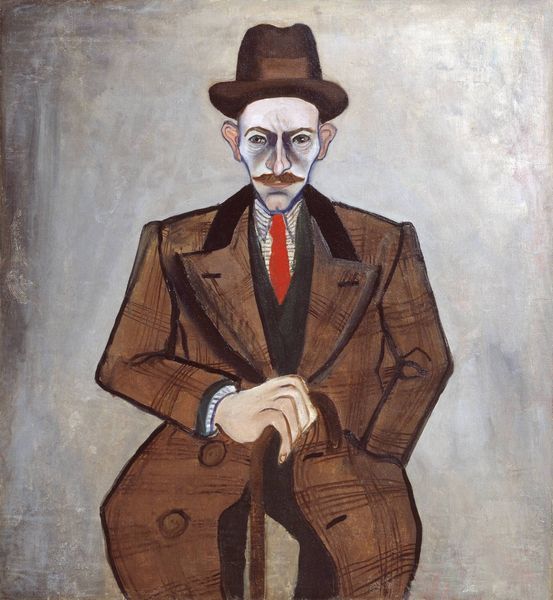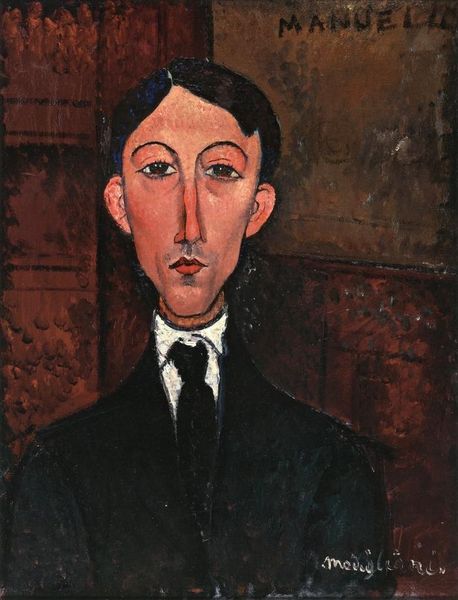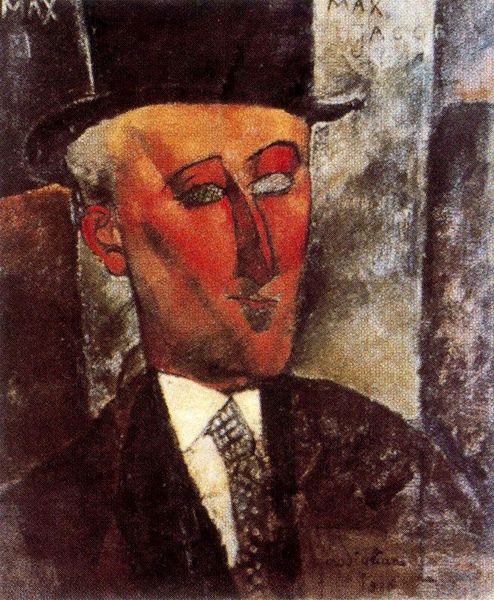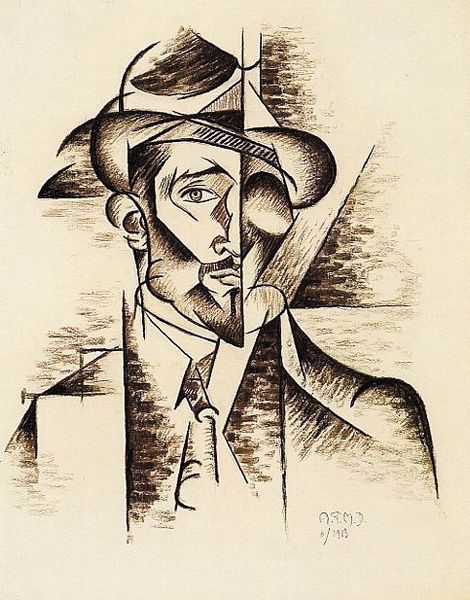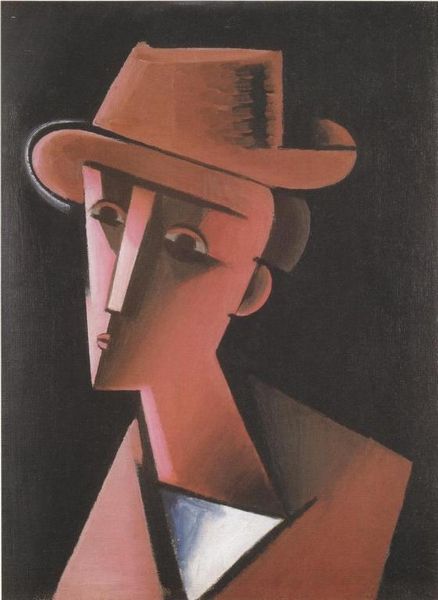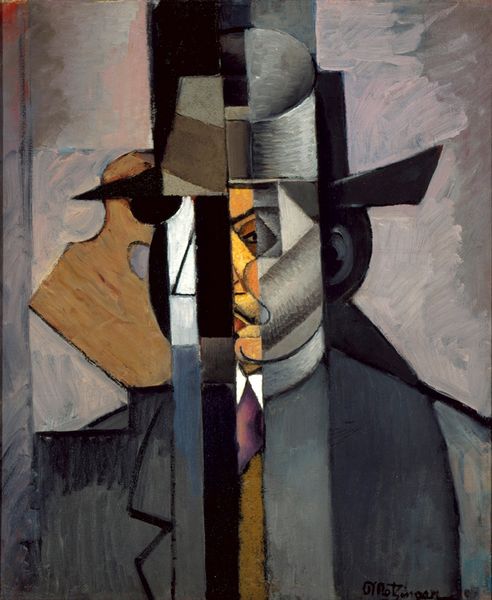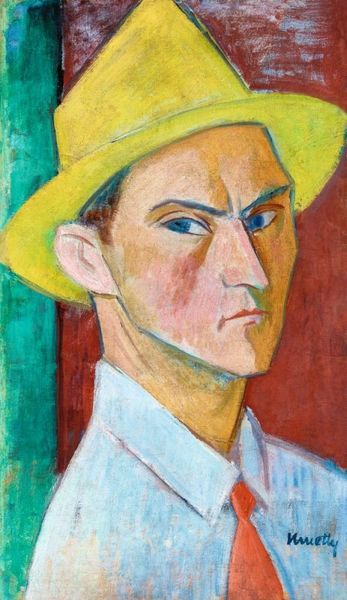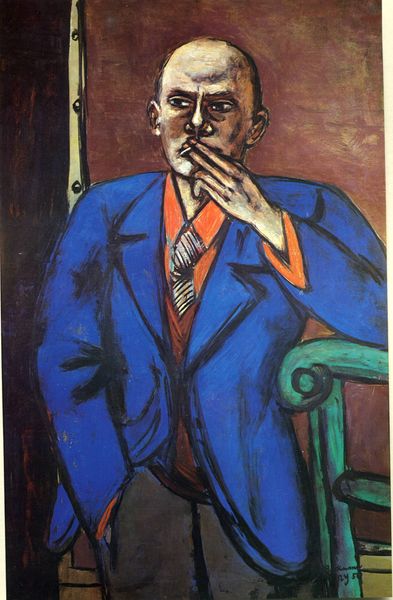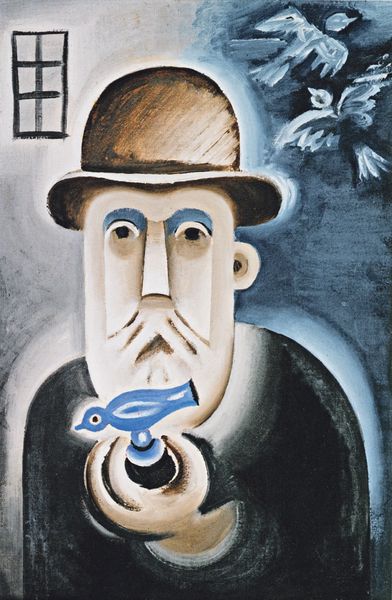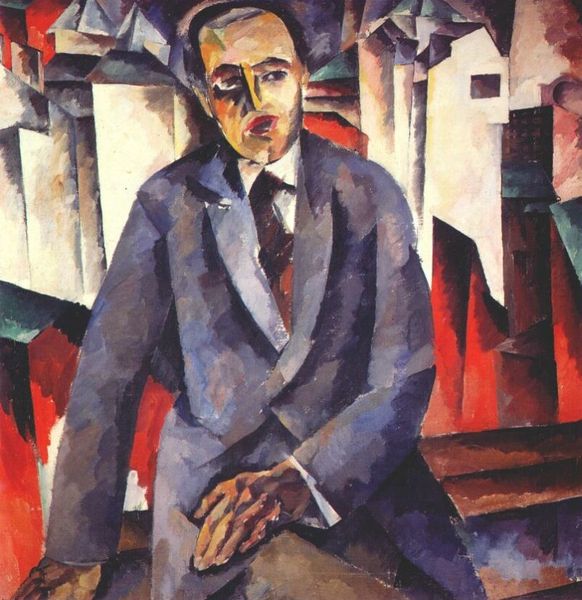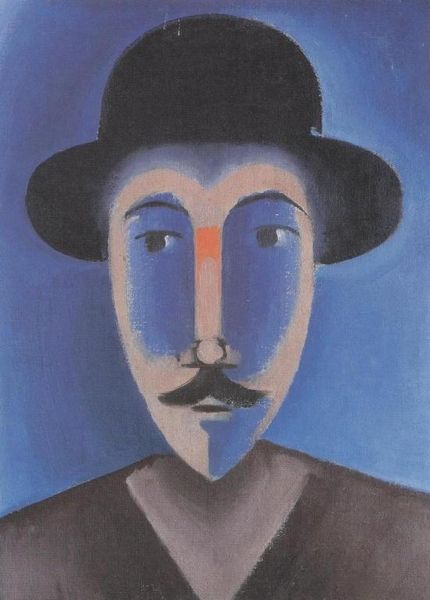
painting, oil-paint
#
portrait
#
cubism
#
self-portrait
#
painting
#
oil-paint
#
caricature
#
geometric
#
modernism
Copyright: Jean Helion,Fair Use
Curator: This is Jean Helion’s "Untitled" self-portrait from 1943, rendered in oil paint. It's an interesting exploration of identity through a Cubist lens, don't you think? Editor: My first impression? Melancholy. There's a sense of isolation radiating from that sharply geometric face. The limited palette only amplifies that. Curator: Yes, there’s something almost haunting about it, despite its simplified forms. The Cubist style dissects his face into planes, almost as if trying to understand the sum of its parts. It's a departure from traditional portraiture, certainly. The year it was created also makes it a time document, capturing a likeness during times of crisis, since Helion escaped a German prison camp that year. Editor: And how the light falls—or doesn't—it's so deliberate. The stark contrast highlights those planes you mentioned, almost sculpting the face. Those heavy outlines accentuate the features without really softening them. Like a mask more than a window to a soul. Curator: A mask perhaps born of trauma, a means to shield oneself. Those unblinking eyes, stark against the shadowy depths of the canvas… It’s a far cry from, say, the idealized portraits we might see of prominent figures of the time. Helion turns introspection into observation of how fractured the self can be. It really pushes you to confront a new standard. Editor: Absolutely. The formal structure—the strong verticals and angles of the hat, tie, and lapel juxtaposed with the flatter planes of the face—it’s all so precise, yet… vulnerable, I think? Is it intentional discord? Are we seeing him in conflict with himself? Curator: I think you've hit on something profound. Maybe it shows how art really reflects what's happening in a mind beyond replicating looks. The very act of breaking apart and reassembling the figure on canvas—what better representation of human strength in chaos? It makes one wonder if all self-portraits become unintentional landscapes of the soul. Editor: Exactly, and that, perhaps, is the genius of Helion's Cubist vision. An offering of a shattered image hoping that something brighter can come from the scattered pieces. It’s that little pop of red from the tie that keeps the darkness at bay for me. A symbol of what maybe Helion had to offer.
Comments
No comments
Be the first to comment and join the conversation on the ultimate creative platform.
